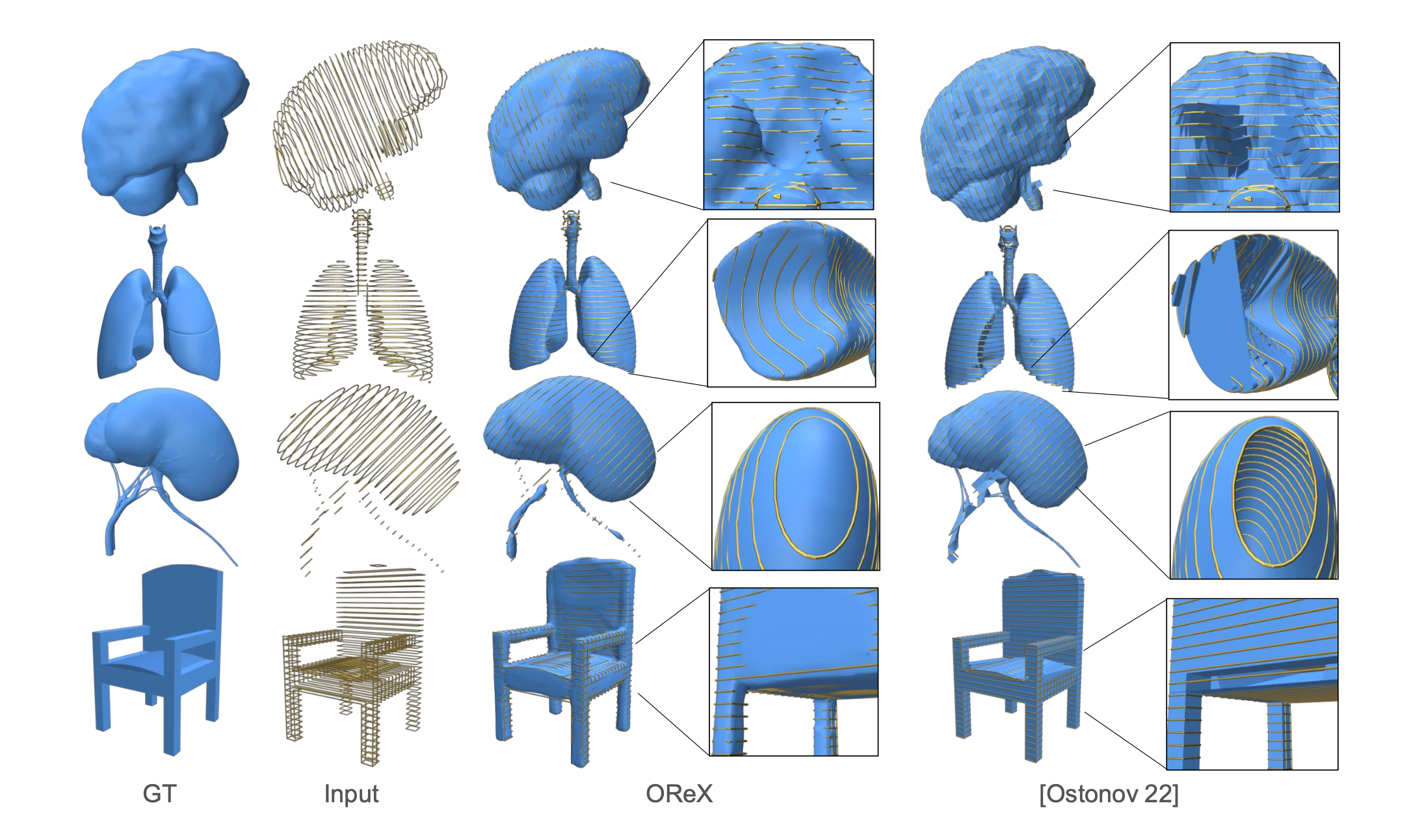OReX: Object Reconstruction from Planar Cross-sections Using Neural Fields
Haim Sawdayee, Amir Vaxman, Amit H. Bermano
#SignalProcessing/INRs #ComputerGraphics/ObjectReconstruction #CVPR/2023
Problem Setting
Reconstruction from cross-sections
- Parallel planes setting
- Any orientation or distribution of planes

How to model it by INR
The target output of our method is an indicator function
CSLC # header
15 2 # number of planes, number of labels (should be at least 2 - inside and outside)
1 78 1 0.0 0.0 1.0 -0.86 # plane index (1-indexing, please state planes in order), number of vertices in the plane image (a hole is counted as another component), number of connected components, plane parameters A,B,C,D, such that Ax+By+Cz+D=0
0.10 0.08 0.86 # The vertices in x,y,z coordinates, should be on the plane.
0.09 0.08 0.86
0.08 0.09 0.86
0.07 0.09 0.86
[...] # rest of vertices
78 1 0 1 2 3 4 5 6 7 8 9 10 11 [...] # image component: starts with the number of vertices, then label of the component (in case of a hole, h should be added and the index of the component contains the hole), then the indices of vertices that form a contour of the inside label, ordered CCW.
[...] # rest of components
Example1
ORex Overview
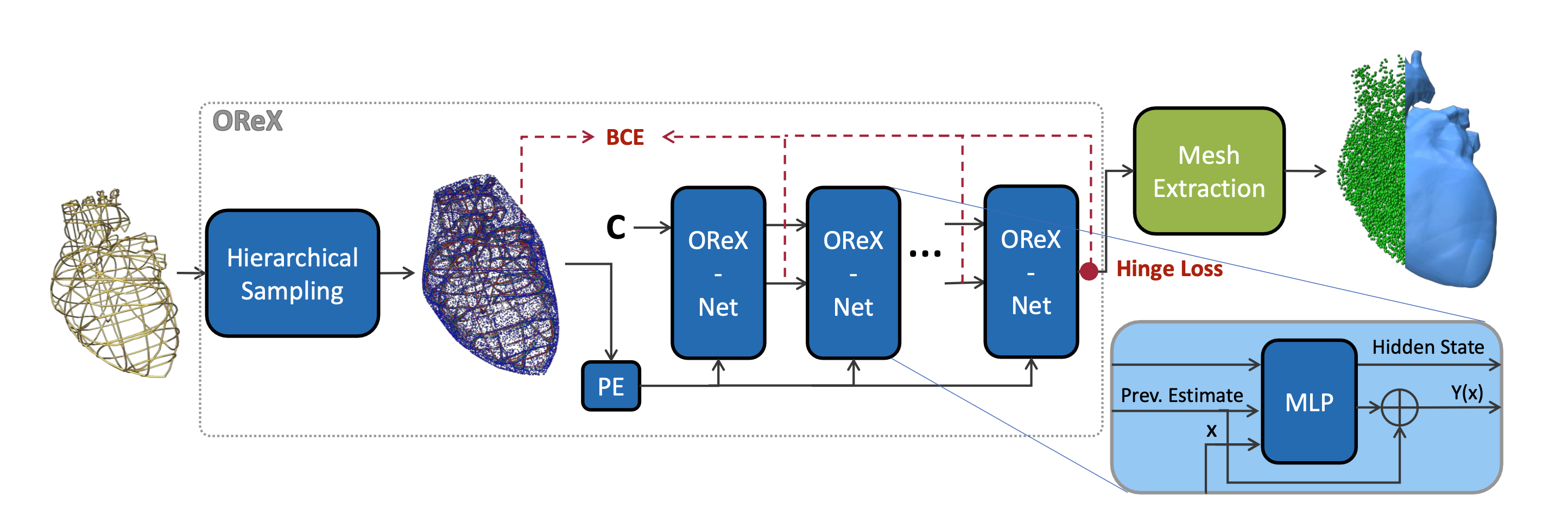
Loss:
Sampling
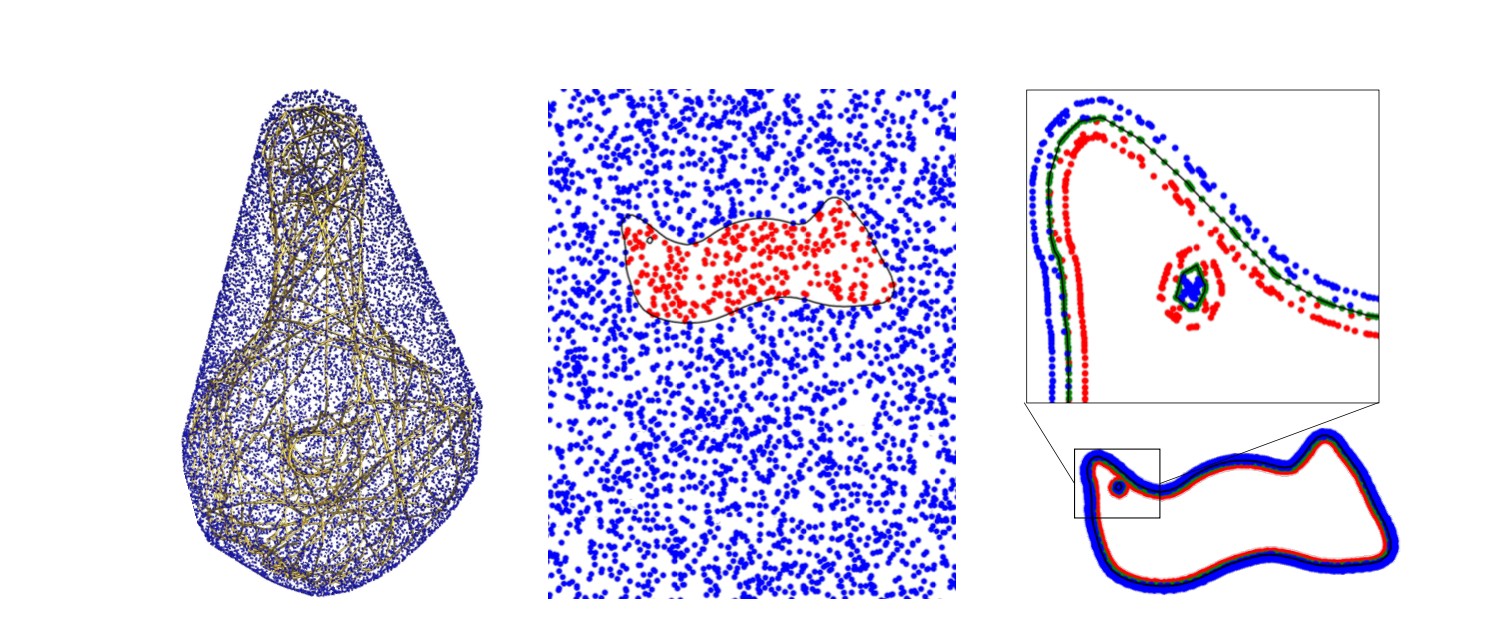
Results gallery


Qualitative comparisons

Quantitative comparisons

Increasing number of slices
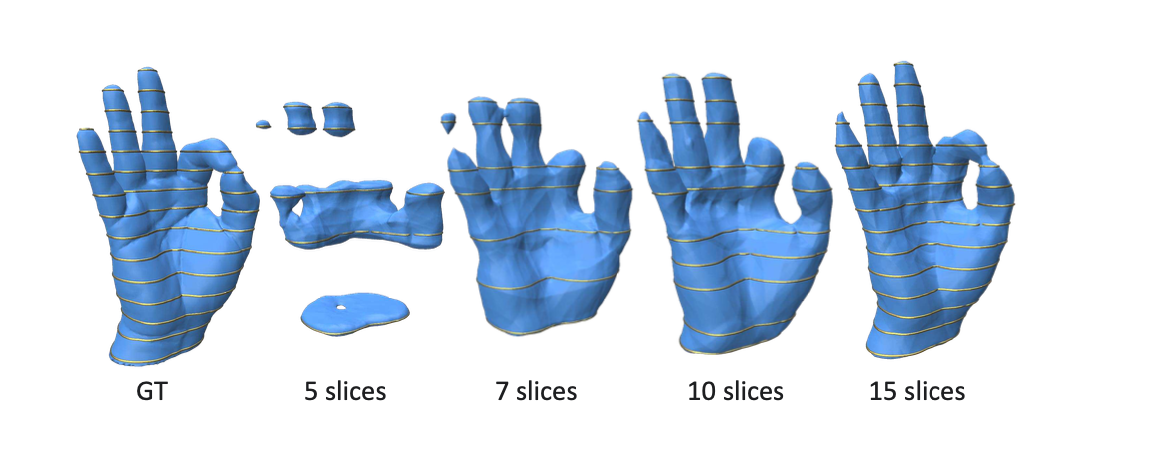
OReX naturally completes regions with missing samples
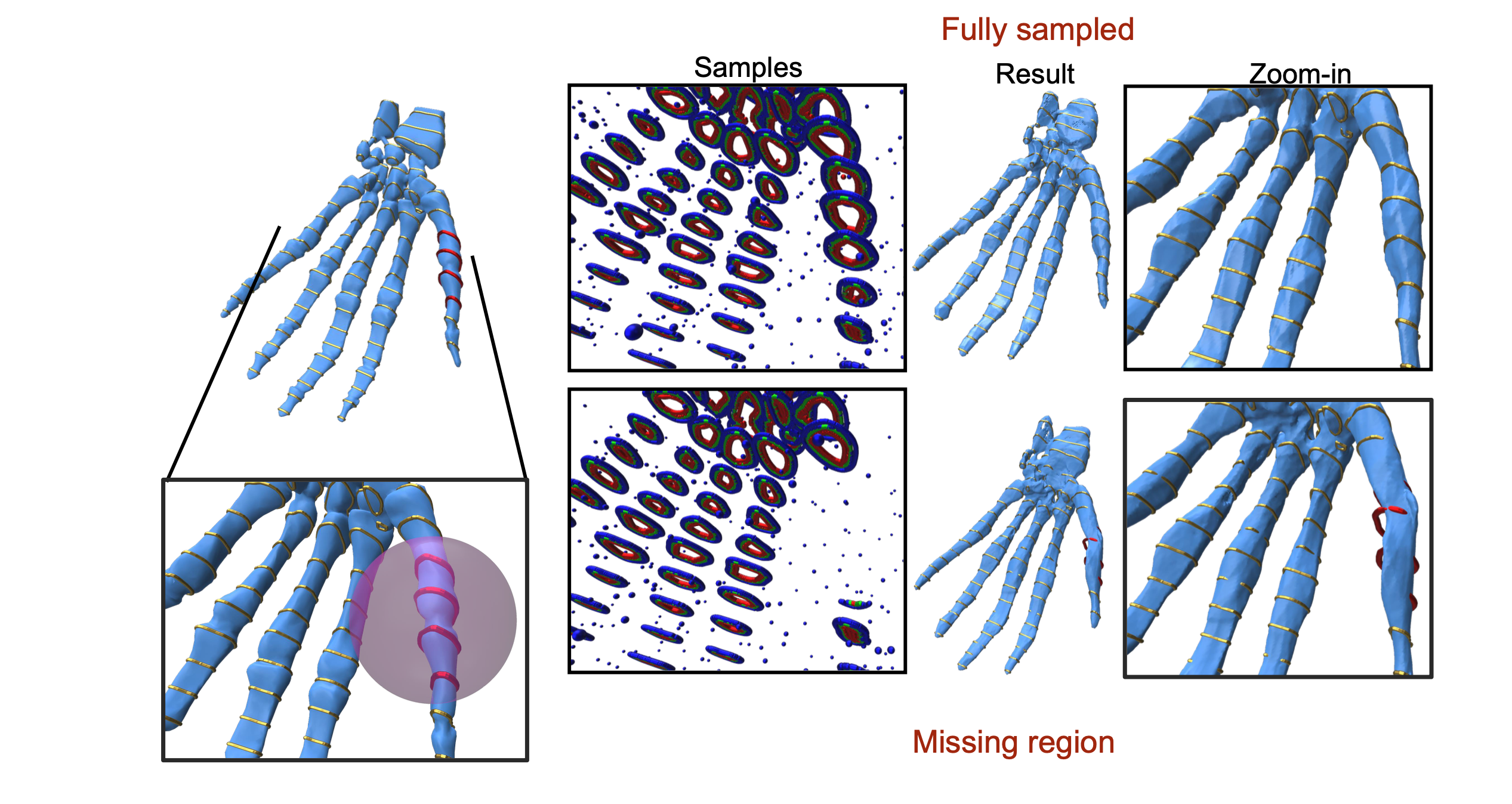
Comparison of OReX to a Reinforcement Learning work by Ostono
